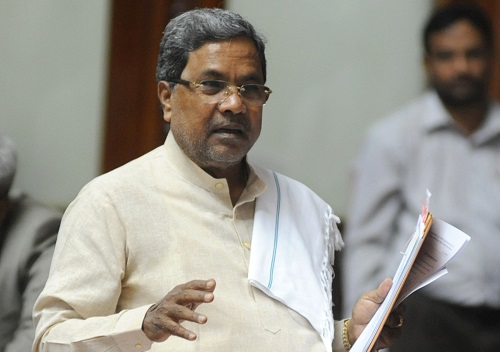Union Budget FY23: Right intent but with trade-offs

Follow us Now on Telegram ! Get daily 10 - 12 important updates on Business, Finance and Investment. Join our Telegram Channel
The intent of Union Budget FY23 is to nurture growth, primarily through public investment, as private investment is yet to meaningfully pick up. It continued to be more transparent, by reducing off-budget expenditure and relatively conservative in its estimates of receipts.
The two numbers which really stood out were the higher capex and higher market borrowing for FY23. We look at the trade-offs of this approach, in terms of its likely impact on states, funding, fiscal consolidation and, most importantly, growth.
Conservative or realistic estimates?
Implied Q4 FY22 (Jan-Mar) estimate point to a 14.5 per cent y/y contraction in gross tax revenue, after it grew 44 per cent during Apr-Dec. Revenue from excise duties (which fall given the cut in November 2021), income tax, CGST etc. appear realistic.
However, corporate tax revenue estimate is quite conservative at ~0.3 per cent of GDP, below our forecast, which could help ease the final FY22 fiscal deficit. Net tax revenue in Q4 FY22 is estimated to fall 37 per cent y/y also because tax devolution to states is estimated to grow 32 per cent y/y.
For FY23, nominal GDP at 11.1 per cent is quite conservative and overall tax buoyancies are estimated to moderate from FY22 as expected. Direct tax buoyancy is estimated to fall slightly blow pre-pandemic levels while indirect tax buoyancy is different also owing to excise duty cuts, changes in the GST system, etc.
Overall, FY23 gross tax revenue growth estimate of 9.6 per cent is towards the lower end of realistic outcomes. The scope for surprise is thus to the upside, mainly from corporate tax revenue, although not to the extent seen in FY22 as pent-up demand diminishes and further buoyancy from higher GST compliance could be lower.
The likely macroeconomic context ahead -- slower global growth and trade, global monetary policy normalisation, slower Chinese economy, impact of higher oil prices, incomplete recovery of the domestic services sector, health of households given the K-shaped recovery, etc. -- could also limit the upside.
Capex growth -- details matter as always
On-budget capex is estimated to rise by 24.5 per cent y/y to Rs 7.5 lakh crore in FY23, from an upward revised Rs 6.03 lakh crore in FY22, which itself is a 41.4 per cent rise. This is encouraging as share of capex in total on-budget expenditure (measure of quality of spending) rises consistently.
However, like last year, off-budget capex eases. In FY22, this is broad-based across 7-8 ministries while in FY23 it is mainly on-budgeting of support (Rs 65,000 cr) to the National Highways Authority of India (NHAI).
This is indeed good for transparency but reduces consolidated capex. There are also some one-offs like the loan to railways in FY21 (Rs 79,398 cr), clearing of Air India liabilities in FY22 (Rs 51,971 cr) and special assistance through 50-year interest-free loan to states for capex (Rs 11,830 cr in FY21 and Rs 15,000 cr in FY22, which rises to Rs 1 lakh crore in FY23).
To be fair, states' capex could rise by the loan amount but timely execution matters for eventual off-take. The actual growth in capex and thus the impetus to growth could be lower than what the headline numbers suggest.
Funding deficit through higher market borrowing -- trade-off for higher capex
The trade-off for higher capex in FY23 is the higher share of market borrowing in fiscal deficit, which, after falling from 76 per cent in FY18 to 49 per cent in FY22, picks up sharply to 67 per cent in FY23. This is primarily owing to lower utilisation of cash balance and lower short-term borrowing vs FY22. Funding from NSSF a) through ‘securities against small savings' falls in FY23 after picking up in FY22 but b) through its core inflows (savings deposits, savings certificate and public provident fund) picks up.
However, a) lower FY23 fiscal deficit, b) higher cash utilisation (our estimate of Central government cash balance is Rs 4.84 lakh crore as on January 21, 2022), and c) recent G-sec switches with the RBI which reduced FY23 redemption by Rs 63,648 crore offers scope for a mild relief to the Rs 14.95 lakh crore gross borrowing announced in the Budget.
However, total public sector deficit (defined as Centre's fiscal deficit + states' fiscal deficit + resources of PSEs excluding internal resources) has come off from recent highs (10.3 per cent of GDP as per FY23BE vs 15.8 per cent in FY21) but is still well above 8.1 per cent in FY19. There is risk of this crowding out private investment once it starts to pick up down the line.
States -- bigger role in capex but conditions apply
Compensation provided to states, from cess collected, for shortfall in GST collection ends in July 2022 and loans provided were for FY21 and FY22. States were allowed additional market borrowing, partly conditional on reforms and capex, and carried forward space expired in FY22. For FY23, states have been allowed a fiscal deficit of 4 per cent of GSDP (Gross State Domestic Product), again 0.5 per cent of which is tied to power sector reforms. They will also be provided with 50-year interest-free loans worth Rs 1 lakh crore for capex.
All this is definitely a good way to incentivise states to undertake important but difficult reforms, like in the power sector, and direct limited resources to capex with higher growth-multiplier and lower inflation outcomes.
However, cooperation from all states, their ability to timely manage revenue expenditure (given a higher share of conditional inflows) and the need to account for differences among states in priority and avenues of spending (which a common mandate could miss) must also be taken into consideration.
Thus borrowing by states has to be seen given that states had already announced a larger-than-expected Q4 FY22 borrowing calendar, and GST-related support is about to end and borrowing costs have been rising more recently. FY23 state budgets, due in the next few months, should provide some indication. Overall, states now have a larger and clearer role in capex and reforms, albeit with the centre directing a bigger share of resources.
Fiscal consolidation -- what it takes to be on the glide path
The Centre's fiscal deficit is targeted at below-4.5 per cent of GDP by FY26. If one does a basic exercise on forecasting major receipts and expenditure till FY26, need for a broader pick up in sources of receipts becomes immediately clear. In other words, non-tax revenue (RBI dividends, telecom spectrum related receipts, etc.) and/or non-debt capital receipts (disinvestments) need to step up soon.
This is also because our pre-pandemic growth was already slowing (FY20 real GDP growth was recently revised downward from 4 per cent to 3.7 per cent) and our potential growth has been likely hit by economic scarring and a K-shaped recovery in the absence of a meaningful employment and wage cycle in the last wo years. Growth (and thus capex for it) is thus good to stabilise the fiscal deficit to GDP ratio but we still need non-tax receipts to fire to be on the glide path.
Despite trade-offs, can public investment get the economy's wheels moving?
Capex-led impetus for growth is likely a good option now given balance sheets of corporates and banks are likely better on aggregate, although possibly with skews within. However, capacity utilisation broadly continues to be at levels below thresholds to commence a private capex cycle.
Balance sheets of households on aggregate (impacted in the last decade by the investment slowdown percolating onto the demand side but then staying afloat with leverage from NBFCs until 2018 after which private consumption materially slowed and is currently below the pre-pandemic real level) have also likely been hit again by the pandemic and the following K-shaped recovery.
With these constraints in play, execution, quality of expenditure and getting states fully on board becomes even more critical to generate inclusive medium-term growth. However, the funding route taken for this in the immediate future tests the appetite of the domestic bond market, although there could potentially be some mild positive surprise here as we traverse FY23.
(Sreejith Balasubramanian is Economist – Fund Management, IDFC AMC. The views expressed are personal)












 320-x-100_uti_gold.jpg" alt="Advertisement">
320-x-100_uti_gold.jpg" alt="Advertisement">












